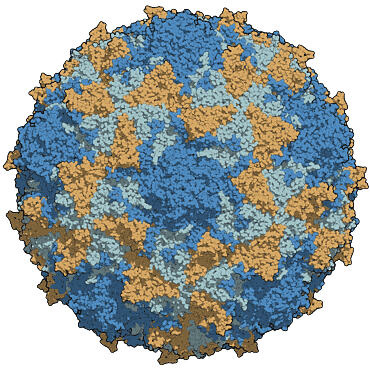How are the evaluation disinfectant products in veterinary area?
 EN 14675 standard provide useful steps for the quantitative suspension test to establish virucidal activity simulated practical conditions.
EN 14675 standard provide useful steps for the quantitative suspension test to establish virucidal activity simulated practical conditions.
According to our proficiency testing calendar next may starting the ring trial for technical competence evaluation for this standard. All accredited laboratories or in accreditation process could evaluate their technical competence in our program.
This rigorous testing procedure helps assess the virucidal activity efficacy of the disinfectant according to EN14675 standard, providing valuable information about your technical competence in developing this standardized methodology.
Al results should be including into the data sheet results collection sent together with the protocol and must be sent to us to study your results together with the others participant.
In the following sections you can see some of the requirements that our participants will follow.
Minimum ring trial test conditions
The product shall demonstrate at least a decimal log (lg) reduction of 4 in virus titre when tested in accordance with following table.
|
Minimum |
|
| Test organisms | Bovine enterovirus Type 1 (ECBO) |
| Temperature test | 10°C |
| Contact time | 30 min |
|
Interfering substance |
|
| Clean | 0,3 g/l bovine albumin |
Test method in the virucidal activity
A sample of the product as delivered diluted with hard water is added to a test suspension of viruses in a solution of an interfering substance. This mixture is maintained at temperature and contact times specified. At the end of this contact time, an aliquot is taken (validated method must followed). The dilutions are transferred into cell culture units and the infectivity test are done. After incubation, the titres of infectivity are calculated according to Spearman and Kärber(quantal tests) and evaluated. Reduction virus infectivity is calculated from differences of lg virus titres before (virus control) and after treatment with the test product.
DETERMINATION OF THE ASSIGNED VALUE IN THE VIRUCIDAL ACTIVITY
It is the best estimate of the “true value” of the property under proficiency test.
This value is commonly established from the results of the participating laboratories (consensus value, when there is method dependence), or it can be assigned by the coordinating body of the proficiency test from previous measurements (reference value); in any case, this value is used to evaluate the performance of the participants.
For this ring trial SHAPYPRO will use the Algorithm A described in Appendix C of ISO 13528 was used to obtain robust estimators of the mean and standard deviation. More data in previous article https://shapypro.com/evaluation-of-virucidal-activity/
Z-SCORE EVALUATION
We applied the z-score to the reasoning of our participants’ results to identify extreme results in comparison with the rest of the participants.
It should be noted that for phase II, when participant’s results were logR < X or logR > X, the value of X was used for the calculation of reference values and Z-scores.
- Z-score ≤ 2.0 indicates satisfactory performance and generates no signal.
- 2.0 < Z-score < 3.0 indicates questionable performance and generates a warning signal.
- Z-score ≥ 3.0 indicates unsatisfactory performance and generates an action signal.
If you would like to know more about our proficiency testing, please do not hesitate to contact us.
ASSESSMENT COMPLIANCE IN THE VIRUCIDAL ACTIVITY
The assessment of compliance with the requirements set out in the method validation requires the use of different tools, such as: participation in intercomparison testing.
On the other hand, the routine implementation of external control through proficiency testing allows checking that the factors determining the magnitude of the uncertainty have not changed since the validation process demonstrated the adequacy of the method.
Therefore, intercomparisons are an appropriate means to ensure that intra-laboratory activities (validation, use of reference materials and quality control) are working satisfactorily and, if unexpected sources of error are detected, to initiate corrective actions.
Regular participation in intercomparison testing also allows comparison of results. In addition, SHAPYPRO offers personalised advice after the competence assessment and helps to implement satisfactory mitigation measures.
Intercomparisons can cover different objectives, such as:
- evaluation of the performance of laboratories.
- identification of problems in laboratories
- Establishment of efficiency and comparability of tests or measurement methods.
- identification of differences between laboratories
- characterisation of methods
- education of technical staff
FRECUENCY OF PARTICIPATION
Laboratory shall establish a frequency of participation considering at least the following aspects at least the following aspects:
- Complexity of the method: in cases where the test involves a long process, complex and with many intermediate steps before the final result is issued, a higher frequency of participation should be considered. In such cases, a higher frequency of participation should be considered, as these are usually the cases, subject to a higher probability of error.
- Variability in the type of matrices or the possibility of interferences that are difficult to control in validation.
- Volume of activity: it should be avoided to consider that the infrequent performance of a given test may be associated with a low/low frequency of participation, as there may be situations where greater participation is necessary to assess the maintenance of requirements established in the validation.
- History of intercomparisons: in those cases where the laboratory has previous participations, the results obtained should be considered to establish an appropriate frequency.
Our programs cover the full scope of the biocidal efficacy standards within 5 years, as stated in ISO/IEC 17025.
If you would like to know more about our proficiency testing, please do not hesitate to contact us.
Do you want to get access to our 2024 agenda? Download it here.


